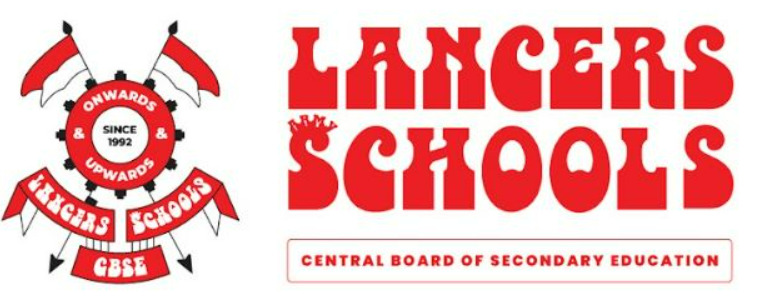
What is classroom management?
An effective & smart classroom management refers to the set of techniques and practices used to give structure and encourage a positive learning environment for children. To keep classroom activity under control, the teacher gives directions to shape the student’s behavior. It is evident that effective classroom management occurs when students are organized, actively engaged in their learning, and behavioral disruptions are minimal. An effective management plan keeps the classroom safe and enjoyable for students so they can focus on learning.
It takes a lot of patience, smart timing, and the implementation of suitable limits to manage a classroom effectively. Trying to teach a group of young people to restrain their emotions is not an easy task. Many CBSE schools in India are promoting these guidelines and can, however, offer kids the mindset they need to succeed in school and in their future employment.
Tips for classroom management
To ensure that your students are learning as much as possible, you need to manage the classroom effectively. Here are some tips to keep in mind as you work to create a positive classroom management
1. Make Teaching Effective
You will struggle to create a uniformed classroom without setting clear standards and norms. Students might quickly lose attention and cause disruptions if they are unsure of how to behave or what is expected of them. As a result, teachers may wind up wasting precious instructional time by spending more time redirecting students. The classroom can be kept organised with the use of effective management techniques, which in turn creates a favourable learning environment.
2. Praise Students for Their Accomplishments
Classroom management won’t be possible if you don’t celebrate a student’s achievements. It is easy to get frustrated with bad behaviour, but it can be more challenging when students are doing well in your class. Take time out of your day or week to recognize those who have been contributing positively by praising them as they work on tasks together or through.
3. Do Not Be Partial to Students
Teachers must never show favoritism or partiality toward chatty or silent students. Allow everyone an opportunity to speak, and before you dismiss students for anything that might not be within their control, give them plenty of opportunities to do so.
4. Keep Simple Rules for Your Classroom
Keep the rules in your classroom basic and easy to understand for students to follow in order to maintain effective classroom management. Students can concentrate on learning in a good environment as a result of this. It will be simple if you establish a rule requiring each student to check that the lights are turned off when class is over. However, if you continue to enforce strict regulations like the need that every student present a lesson to the class every day, it might put pressure on them.
Classroom Management Styles
An educator’s ability to manage a classroom effectively is the first aspect of good teaching. When it comes to educating students and ensuring their safety, all teachers are held to the same standards. However, there are various methods that teachers employ to achieve these standards.
Classroom management can be done in four different ways: authoritarian, authoritative, permissive, and indulgent. They range from the teacher having a lot of control and little student participation to the teacher having less control and greater participation from the students.
1. Authoritarian
A teacher having complete control over the classroom is referred to as an authoritarian classroom management style. Students lack the freedom to participate actively and to respond. The instructor retains the center of attention and overall authority in the classroom.
2. Authoritative
A balance between teacher control and student interaction characterizes the authoritative classroom management approach. Students are urged to participate and work together in this type of classroom while also adhering to the regulations.
3. Permissive
Class management styles with a permissive approach tend to be more laissez-faire and less involved with the students. This style of teaching does not engage the student nor does it want to engage the student.
4. Indulgent
High levels of involvement but low levels of control are characteristics of the indulgent management style in the classroom. Although the teacher allows students to express themselves freely, because of the lack of control, the class is taken over by the pupils, and lectures frequently veer off course. The students typically like the instructor who uses this approach.
Why is classroom management important?
Classroom management is both action and goal-orientated. It is designed to offer children discipline whilst preventing disruption before it occurs. Here are some points about the importance of classroom management:
- Create a holistic learning environment. It’s important that children are afforded a classroom where their learning is successful.
- Build a supportive facility. Children must be educated both academically and emotionally.
- Maintain order. Without the right discipline, it is impossible to create an effective learning environment.
- Encourage and reward. Students must be encouraged into self-control by promoting positivity in which their good behavior is rewarded.
- Be clear. Children thrive on clarity so it’s important that your classroom management strategy is communicated effectively.
Frequently Asked Questions
Q. What are the benefits of classroom management?
A. Classroom management is a crucial aspect of teaching. It ensures that the students are engaged in the lesson and are not distracted by their surroundings. It also helps to create a safe and welcoming environment for the students, which in turn increases the chances of them learning more effectively.
Q. How does classroom management impact a student’s learning process?
A. The classroom is an important space for student learning. The teacher’s control over the environment can have a significant impact on how students learn. This includes assigning tasks to students, giving them feedback on their work, and providing a safe environment for them to learn in.
Q. What are some strategies to improve classroom management?
A. There are many strategies to improve classroom management. One of the most effective is to have a positive and consistent relationship with students. This can be achieved by being empathetic, understanding, and attentive to their needs.


buy misoprostol medication – buy misoprostol generic buy diltiazem online